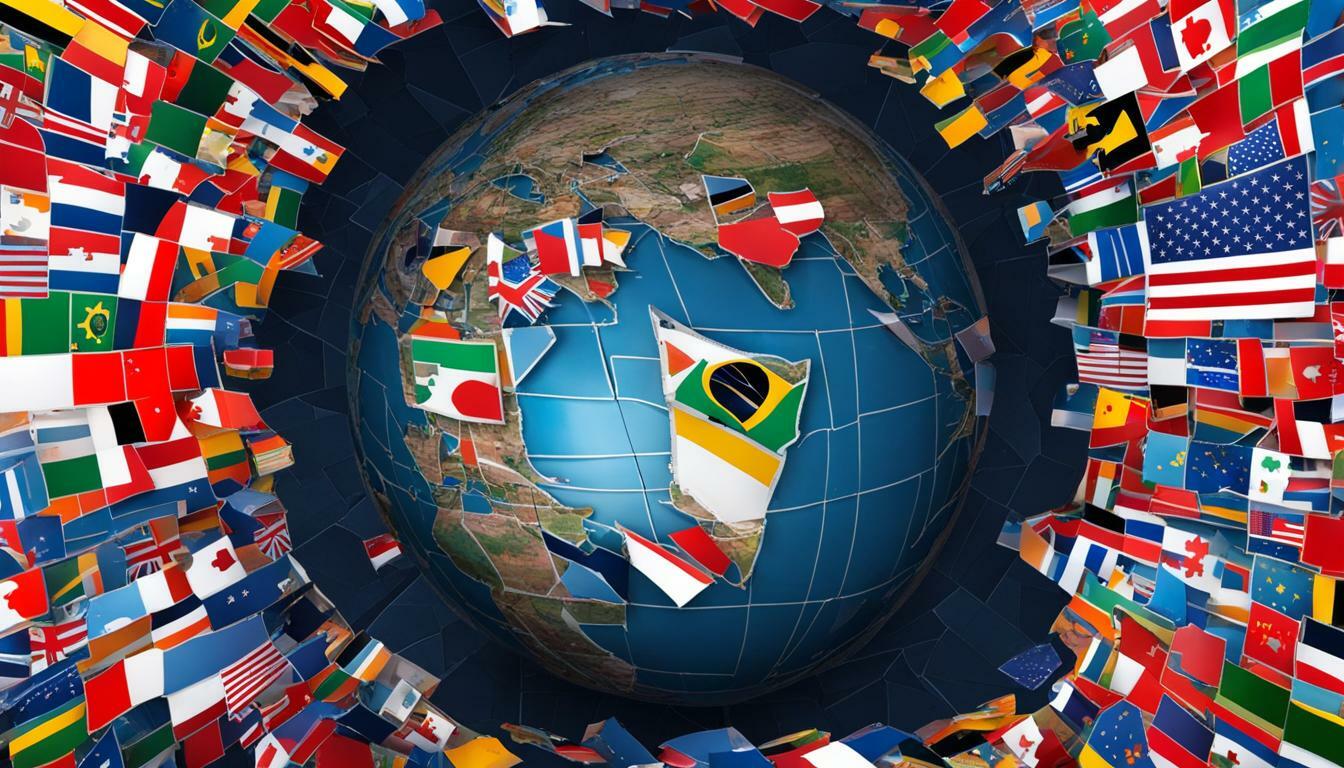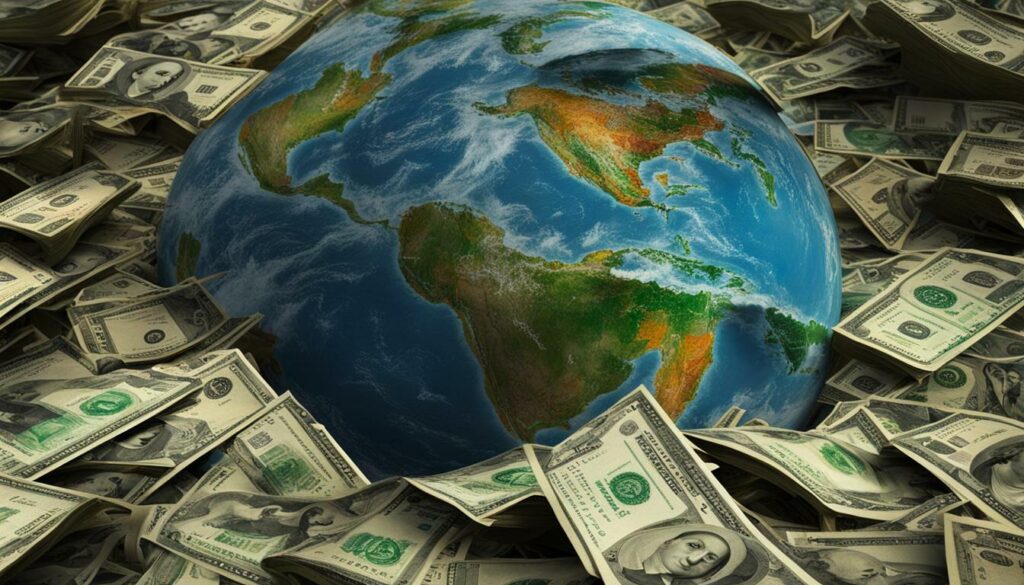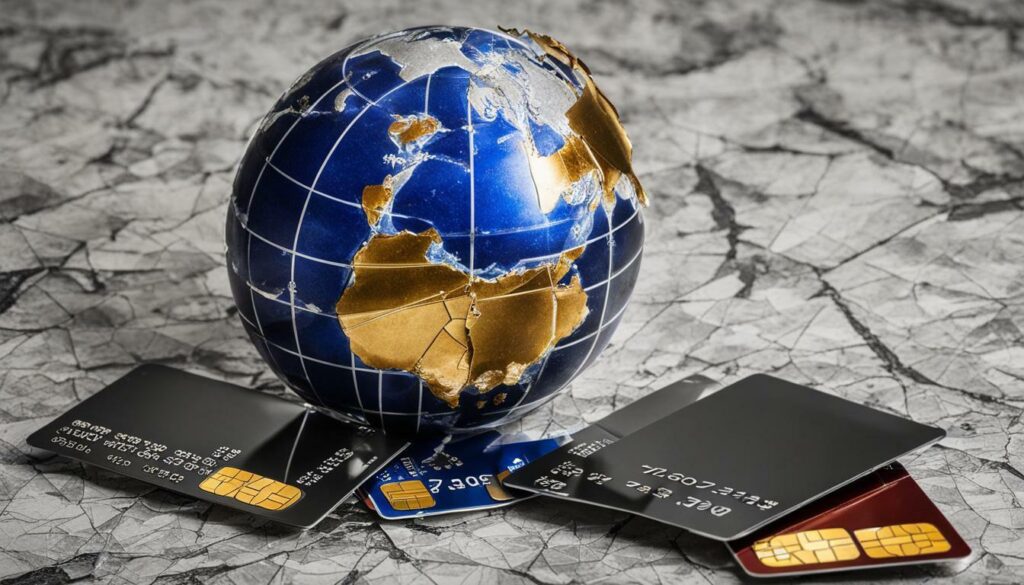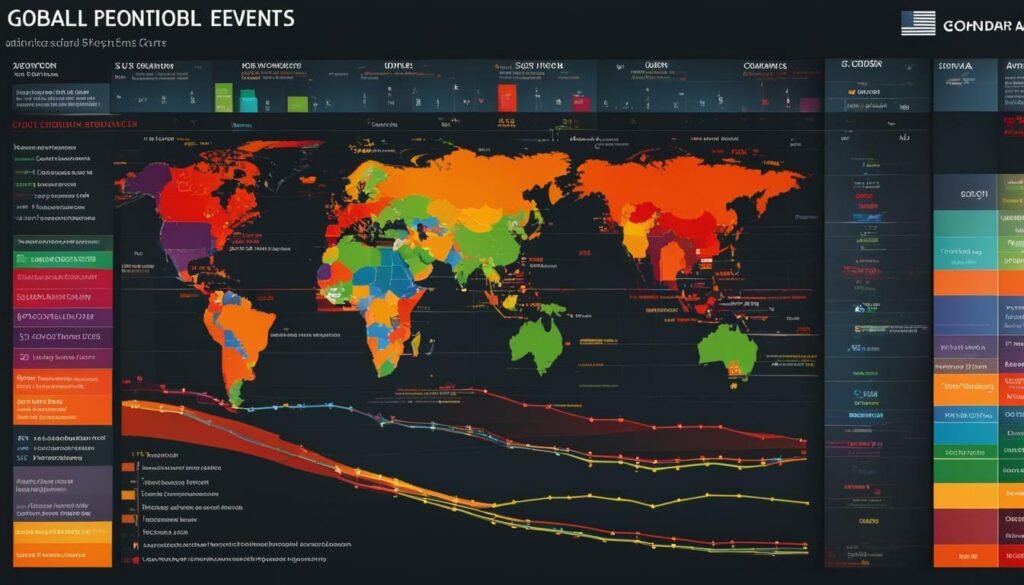The impact of global events on credit industries

The impact of global events on credit industries is a crucial aspect to consider when assessing the economic landscape, as credit policies play a significant role in supporting households and businesses, especially during times of crisis such as the recent pandemic. Understanding how these global events affect credit industries is essential for evaluating the overall stability and recovery of the economy.
Key Takeaways:
- Global events have a significant impact on credit industries and the overall stability of credit markets.
- Credit policies, such as credit guarantee programs and loan forbearance, play a vital role in supporting households and businesses during times of crisis.
- Accurate measurement of credit policies is challenging, as official government statistics often fail to capture the full extent.
- The macroeconomic effects of global events on credit industries include a positive correlation between real GDP growth and the combined funds provided by credit and fiscal policies.
- Elevated savings rates during global events are closely related to the amount of funds provided by credit industries.
By understanding and analyzing the impact of global events on credit industries, policymakers and economists can make informed decisions to drive economic recovery and ensure the stability of credit markets.
The Connection Between Global Events and Credit Industries
Global events have a direct and profound impact on credit industries, influencing lending practices, credit flows, and the overall stability of credit markets. These events can disrupt the normal functioning of credit markets, leading to changes in borrowing costs, availability of credit, and risk appetite among lenders. As a result, credit industries must closely monitor and adapt to these events to ensure the smooth functioning of the financial system.
One major example of global events affecting credit industries is the recent COVID-19 pandemic. This unprecedented crisis has led to a surge in credit demand from both households and businesses. To support these entities, credit guarantee programs, direct lending, and loan forbearance policies were implemented by governments around the world. These measures aimed to maintain liquidity, prevent bankruptcies, and provide a safety net for those affected by the economic consequences of the pandemic.
🚨 TUIC Errors + Low Credit Score?
CreditScoreIQ helps you build credit faster by reporting utility bills to all 3 bureaus—while you dispute errors.
Start Building Credit Today →The role of credit policies in supporting households and businesses during the pandemic cannot be overstated. These policies provided much-needed financial resources and stability in times of uncertainty, helping to alleviate the negative impacts of the global event on credit industries.
However, accurately measuring the size and cost of these credit policies is a complex task. Official government statistics often fail to capture the full extent of credit support provided, making it challenging to assess the true impact on credit industries. Nevertheless, it is evident that these policies have increased resources for firms and households, accounting for a substantial share of GDP.
Table 1 below provides an overview of the macroeconomic effects of global events on credit industries:
| Macroeconomic Effects | Description |
|---|---|
| Real GDP Growth | Shows a positive correlation with the combined funds provided by credit and fiscal policies. |
| Savings Rates | Correlate with the amount of funds provided during global events. |
| Inflation | Less clear, but likely influenced by the large levels of incremental resources provided by governments. |
Understanding and analyzing the relationship between global events and credit industries is essential for assessing economic recovery and stability. By closely monitoring the impact of global events on credit markets, policymakers, financial institutions, and businesses can make informed decisions to mitigate risks and support the resilience of the credit industry.

Financial institutions play a crucial role in mitigating the impact of global events on credit industries. They act as intermediaries between borrowers and lenders, facilitating the flow of credit in the economy. During times of crisis, such as the recent pandemic, financial institutions must navigate the challenges posed by global events while maintaining the stability of their operations and protecting the interests of their clients.
- Assessing Risk: Financial institutions must carefully evaluate the creditworthiness of borrowers and adjust their lending criteria accordingly. This includes considering the potential impact of global events on the financial health of borrowers and the overall credit risk in the market.
- Ensuring Liquidity: Global events can create liquidity pressures in credit markets, making it essential for financial institutions to have access to adequate funding sources. This enables them to meet the credit demands of borrowers, maintain their operations, and manage potential risks.
- Adapting to Regulatory Changes: Regulatory frameworks often evolve in response to global events, imposing new obligations and requirements on financial institutions. These institutions must stay updated with regulatory developments and ensure compliance to maintain the stability and integrity of the credit industry.
Financial institutions that effectively navigate the challenges posed by global events can contribute to the overall stability and resilience of credit industries. By adopting proactive risk management strategies, ensuring adequate liquidity, and complying with regulatory frameworks, these institutions play a crucial role in supporting economic recovery and stability.
As global events continue to shape the economic landscape, it is of utmost importance for credit industries and financial institutions to remain vigilant, adaptive, and resilient. By staying informed, monitoring market dynamics, and proactively managing risks, the credit industry can better navigate the challenges posed by global events and foster long-term stability.
The Macroeconomic Effects of Global Events on Credit Industries
The macroeconomic effects of global events on credit industries are notable, with a positive correlation between real GDP growth and the combined funds provided by credit and fiscal policies. During global events such as the recent pandemic, credit policies have played a vital role in supporting households and businesses, offering much-needed financial stability. Programs like credit guarantee programs, direct lending, and loan forbearance have provided additional resources to firms and households, accounting for a substantial share of GDP.
However, accurately measuring the size and cost of these credit policies can be challenging. Official government statistics often fail to capture the full extent of these measures, making it difficult to assess their true impact. Despite this limitation, it is clear that credit policies have increased the availability of funds for businesses and individuals, contributing to economic growth. The cross-section of real GDP growth is positively correlated with the combined funds provided by credit and fiscal policies, highlighting the significant macroeconomic effects.
Furthermore, an interesting observation is the relationship between elevated savings rates during global events and the amount of funds provided. As individuals and businesses navigate uncertain times, they tend to save more, which in turn leads to higher levels of funds available through credit policies. This connection emphasizes the importance of credit industries in supporting economic recovery and stability during global events.
Impact on Inflation
While the macroeconomic effects of global events on credit industries are evident, the impact on inflation is slightly less clear. The large levels of incremental resources provided by governments can influence inflation rates, but the exact extent of this effect is still subject to analysis. Understanding the relationship between credit policies, global events, and inflation is crucial for policymakers in maintaining price stability and promoting sustainable economic growth.
Overall, comprehending and analyzing the effects of global events on credit industries is essential for assessing economic recovery and stability. The macroeconomic implications, including the correlation with real GDP growth and the increased availability of funds, highlight the significant role of credit policies. However, proper measurement and understanding of the impact on inflation are areas for ongoing research and analysis.

| Global Event | Credit Industry Impact |
|---|---|
| Economic Recession | Reduction in credit availability, higher default rates |
| Natural Disasters | Increase in non-performing loans, disruption in lending activities |
| Political Unrest | Uncertainty in credit markets, decline in investment and lending |
“The availability of credit during global events can be a determining factor in the economic recovery process. When credit policies are well-designed and effectively implemented, they can provide the necessary support to help businesses and individuals overcome the challenges posed by global events.” – Financial Analyst
Assessing the Economic Recovery and Stability through Global Events and Credit Industries
Analyzing the impact of global events on credit industries is essential for evaluating economic recovery and stability, as credit industries play a vital role in supporting the recovery process and maintaining market stability. The COVID-19 pandemic serves as a prime example of how global events can significantly disrupt credit flows and affect the overall stability of credit markets. Understanding the relationship between global events and credit industries is crucial for policymakers, businesses, and individuals alike.
During the pandemic, credit policies emerged as a critical tool in supporting households and businesses through challenging times. Governments worldwide implemented credit guarantee programs, direct lending initiatives, and loan forbearance measures to mitigate the economic impact of the crisis. These policies injected substantial resources into the credit industry, providing much-needed liquidity and support for firms and households. However, accurately measuring the size and cost of these credit policies remains a challenge.
Properly measured, credit policies increased resources for firms and households, accounting for a substantial share of the Gross Domestic Product (GDP). The combined funds provided by credit and fiscal policies showed a positive correlation with the cross-section of real GDP growth. The elevated savings rates during the pandemic also correlated with the amount of funds provided, contributing to economic recovery.
The macroeconomic effects of global events on credit industries extend beyond GDP growth. Inflation, a key economic indicator, is likely influenced by the large levels of incremental resources provided by governments. However, assessing the direct impact of global events on inflation is complex, as other factors such as supply chain disruptions and changes in consumer behavior also come into play. Despite these challenges, understanding and analyzing the connections between global events and credit industries are fundamental for effectively managing economic recovery and maintaining stability in credit markets.

- Analyzing the impact of global events on credit industries is crucial for assessing economic recovery and stability.
- Credit policies, such as credit guarantee programs and direct lending, played a significant role in supporting households and businesses during the pandemic.
- Accurately measuring the size and cost of credit policies remains challenging, but they accounted for a substantial share of GDP and contributed to economic recovery.
- The macroeconomic effects of global events on credit industries extend beyond GDP growth and can impact inflation levels.
- Understanding the relationship between global events and credit industries is fundamental for effectively managing economic recovery and maintaining stability in credit markets.
By closely monitoring the impact of global events on credit industries, policymakers, businesses, and individuals can make informed decisions to navigate the ever-changing economic landscape and ensure a robust and stable financial system.
| Global Events | Impact on Credit Industries |
|---|---|
| Natural Disasters | Disruptions in credit flows, increased loan defaults |
| Financial Crises | Tightening lending practices, market instability |
| Geopolitical Tensions | Uncertainty, reduced investor confidence |
Properly Measuring Credit Policies: Gaining a Comprehensive Understanding
Properly measuring credit policies and their impact on credit industries is crucial for gaining a comprehensive understanding of their economic effects. Credit policies played a significant role in supporting households and businesses during the pandemic, providing much-needed relief through credit guarantee programs, direct lending, and loan forbearance. However, accurately quantifying the size and cost of these policies can be challenging.
Official government statistics often fail to capture the full extent of credit policies, making it difficult to assess their true impact on the economy and the credit industry. Despite this limitation, it is evident that properly measured credit policies have increased resources for firms and households, accounting for a substantial share of GDP. These policies have provided essential liquidity and funding, ensuring stability and preventing a more severe economic downturn.

Influencing the Macroeconomic Landscape
“Accurate measurement of credit policies is crucial for understanding their true effects on the credit industry and the broader economy.”
The macroeconomic effects of credit policies are notable. There is a positive correlation between the cross-section of real GDP growth and the combined funds provided by credit and fiscal policies. In other words, as credit policies expand, they contribute to economic growth and stability. During global events like the pandemic, elevated savings rates act as a proxy for the amount of funds provided through credit policies, reflecting their significant contribution to the overall economy.
However, the impact on inflation is less clear. While the large levels of incremental resources provided by governments may influence inflation to some extent, the relationship is complex and multifaceted. It is essential to conduct thorough measurement and analysis to accurately assess the effects of credit policies on inflation rates and overall price stability.
Overall, understanding and analyzing global events and their impact on credit industries is crucial for assessing economic recovery and stability. By properly measuring credit policies, policymakers can gain valuable insights into the effectiveness and efficiency of these policies, leading to informed decision-making and the formulation of more targeted interventions when needed.
Conclusion
In conclusion, understanding how global events impact credit industries is vital for assessing economic recovery and stability, highlighting the significance of accurately measuring credit policies. Credit policies played a significant role in supporting households and businesses during the pandemic, including credit guarantee programs, direct lending, and loan forbearance. However, accurately measuring the size and cost of these policies is challenging, as official government statistics often fail to capture the full extent.
Properly measured, credit policies increased resources for firms and households, accounting for a substantial share of GDP. The macroeconomic effects are notable, with a positive correlation between the cross-section of real GDP growth and the combined funds provided by credit and fiscal policies. The elevated savings rates during the pandemic also correlate with the amount of funds provided. However, the impact on inflation is less clear, although it is likely influenced by the large levels of incremental resources provided by governments.
Overall, understanding and analyzing global events and their impact on credit industries is crucial for assessing economic recovery and stability. By carefully measuring credit policies and their true impact on the credit industry, policymakers and economists can make informed decisions to support future economic growth and stability.
FAQ
Q: How do global events impact credit industries?
A: Global events can disrupt credit flows, impact lending practices, and affect the overall stability of credit markets. Understanding this relationship is crucial for assessing the economic landscape.
Q: What role do credit policies play in supporting households and businesses during global events?
A: Credit policies, such as credit guarantee programs, direct lending, and loan forbearance, have played a significant role in supporting households and businesses during global events like the pandemic. These policies increase resources for firms and households and account for a substantial share of GDP.
Q: Why is accurately measuring credit policies challenging?
A: Accurately measuring credit policies is challenging because official government statistics often fail to capture the full extent of these policies. Proper measurement is crucial for understanding the true effects of credit policies on the economy and the credit industry.
Q: What are the macroeconomic effects of global events on credit industries?
A: There is a positive correlation between the cross-section of real GDP growth and the combined funds provided by credit and fiscal policies. The elevated savings rates during global events also correlate with the amount of funds provided. However, the impact on inflation is less clear and is likely influenced by the large levels of incremental resources provided by governments.
Q: Why is analyzing global events and their impact on credit industries important for assessing economic recovery and stability?
A: Analyzing global events and their impact on credit industries is crucial for assessing economic recovery and stability. The credit industry plays a significant role in the recovery process, and monitoring its resilience and adaptability to global events is essential. Global events can have long-term implications for the stability of credit markets.
Q: Why is properly measuring credit policies important?
A: Properly measuring credit policies is important because it allows us to understand the true impact of these policies on the credit industry. Accurate measurement is necessary to assess the size and cost of credit policies and their effects on the economy.
Ready to Improve Your Credit?
Disputing TUIC errors is step one. Step two? Boost your score by reporting utility payments with CreditScoreIQ.
Get Started Now (Only $1 Trial) →3-bureau reporting • $1M identity insurance • Dark web monitoring






